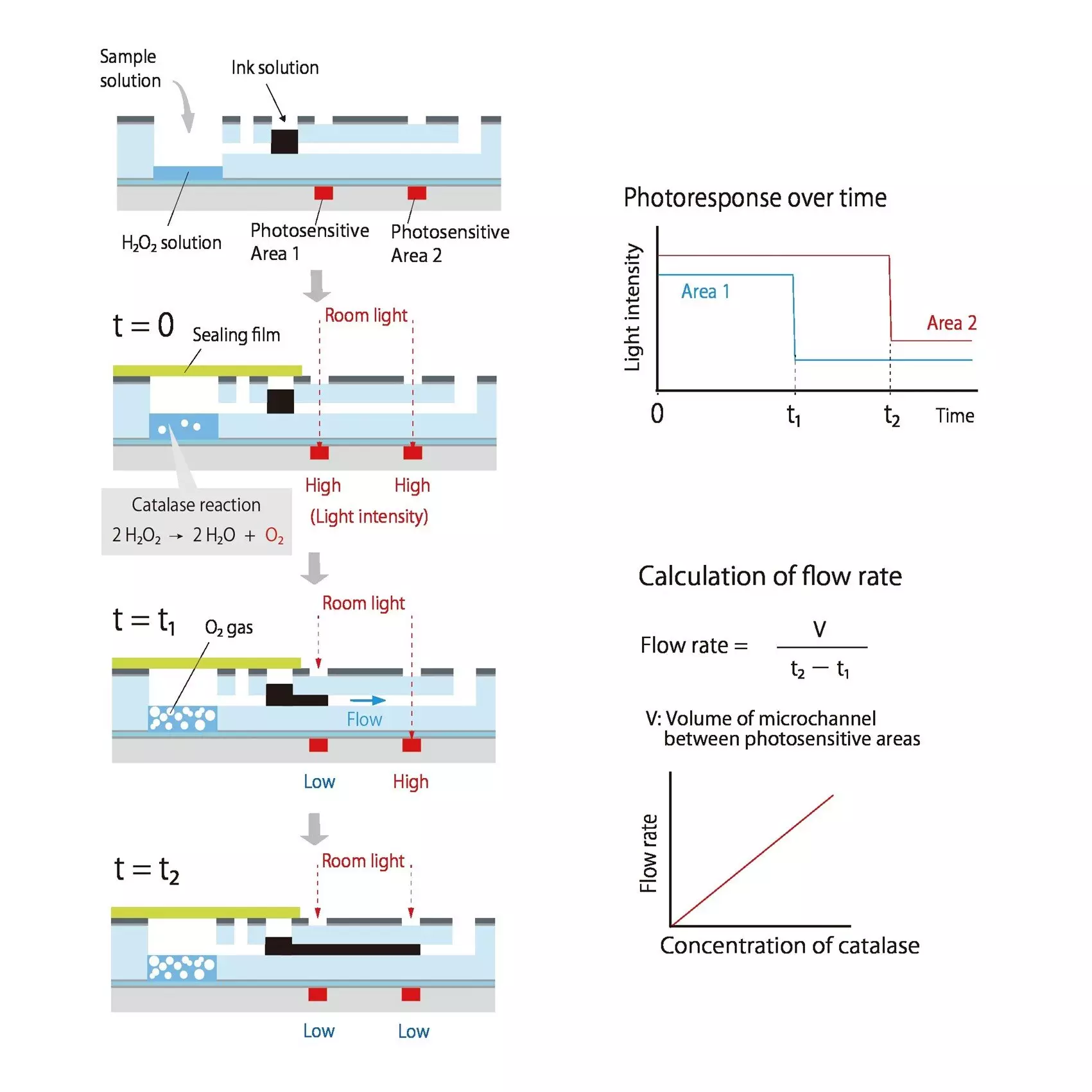In a groundbreaking study conducted by researchers at Tokyo Metropolitan University, a new micro total analysis system has been developed that revolutionizes the field of chemistry. This innovative system enables the quantification of target chemicals in a microfluidic chip without the need for pumps, tubes, or expensive detectors. By utilizing a unique method where compounds react with other chemicals to produce gas, the flow of ink in a connected chamber can be measured using built-in light detectors. This portability of the device allows for bedside clinical analysis, opening up new possibilities for precise and efficient chemical analysis.
Microfluidics technology has emerged as a game-changer in the field of chemistry, offering precision and efficiency with minimal resources. By etching thin channels and chambers into a compact chip that fits in the palm of your hand, microfluidics enables the manipulation of microliter amounts of liquid in a parallelized array of reaction conditions. This not only saves time and cost but also benefits the environment by reducing the use of chemicals. The integration of quantitative chemical detection into microfluidic devices has further enhanced their capabilities, paving the way for comprehensive chemical analysis.
Traditionally, micro total analysis systems (micro-TAS) required pumps, tubes, and expensive light sources for driving flow and measuring optical signals. However, Associate Professor Hizuru Nakajima and his team have developed a novel quantitation method that eliminates the need for additional hardware. Their system relies on the production of gas by a compound of interest, which in turn drives the flow of ink along a channel. By measuring the flow speed using organic photodetectors, the amount of the original chemical can be accurately determined in a cost-effective and simple manner.
The versatility and portability of this new micro total analysis system make it ideal for a wide range of applications, particularly in clinical diagnosis and environmental analysis. By successfully demonstrating the quantification of C-reactive protein (CRP) in human serum, the researchers have shown the potential of this system in medical diagnostics. The ability to detect CRP accurately, even in the presence of common proteins like immunoglobulin G (IgG) and human serum albumin, highlights the effectiveness and reliability of this new technology.
The development of a portable micro total analysis system marks a significant advancement in the field of chemical analysis. By combining the principles of microfluidics with innovative quantitation methods, researchers have created a powerful tool that has the potential to revolutionize clinical diagnosis and environmental analysis. The simplicity, cost-effectiveness, and accuracy of this system make it a valuable asset for various industries, setting a new standard for chemical analysis in the future.


Leave a Reply